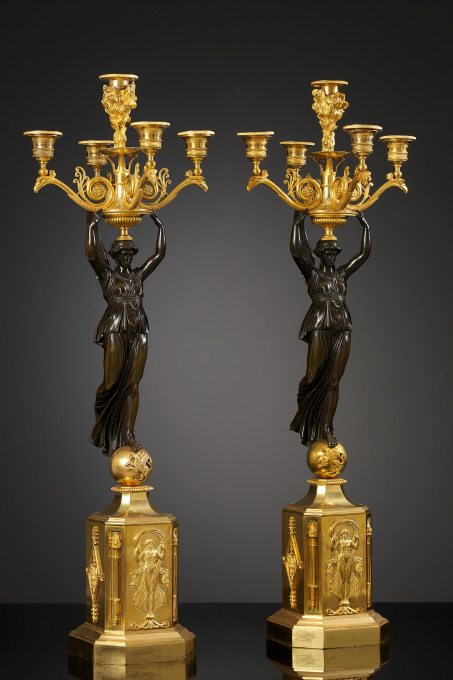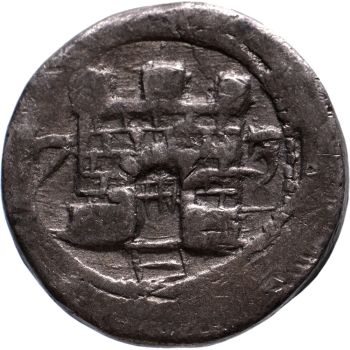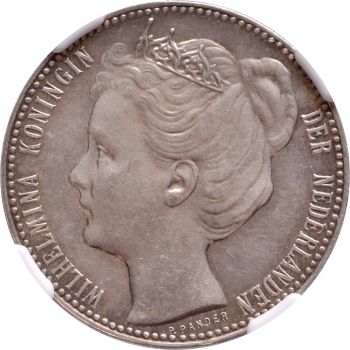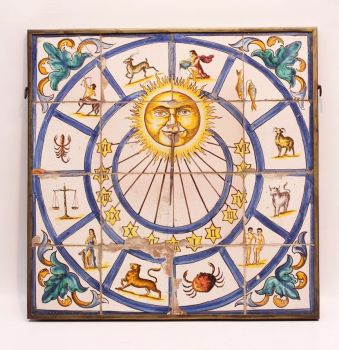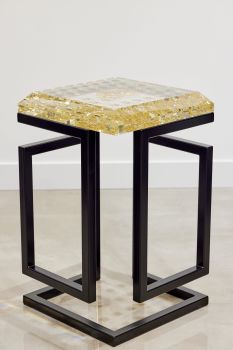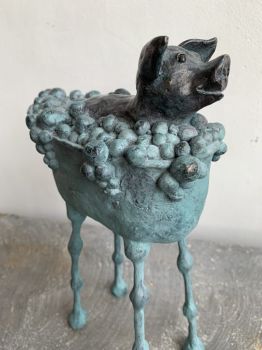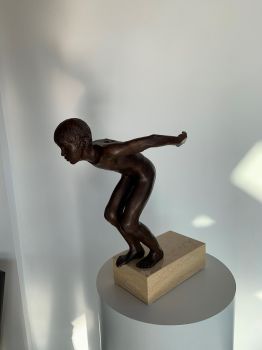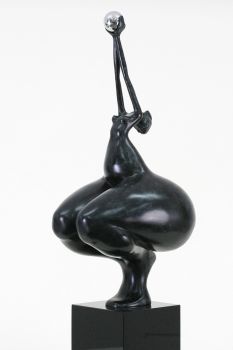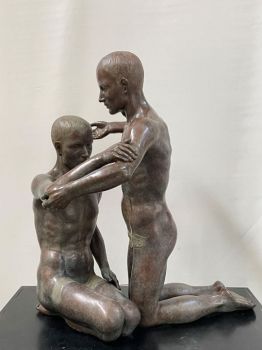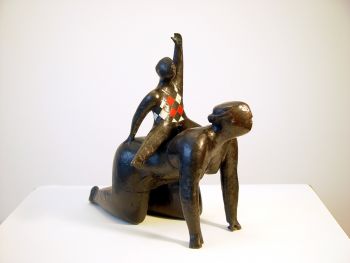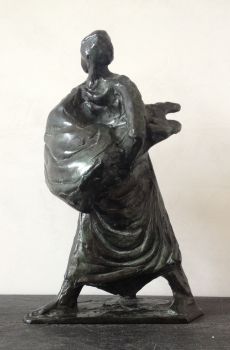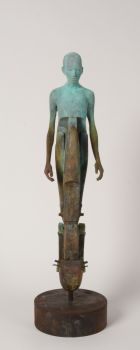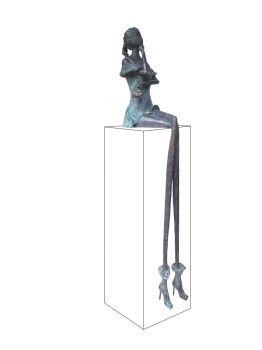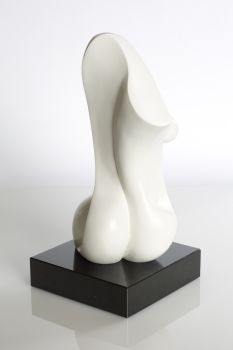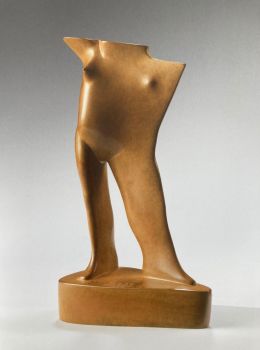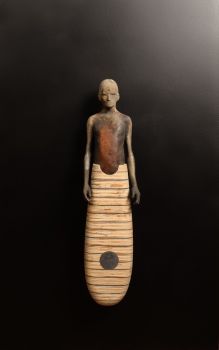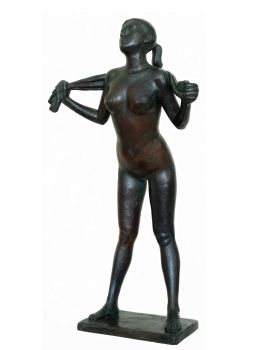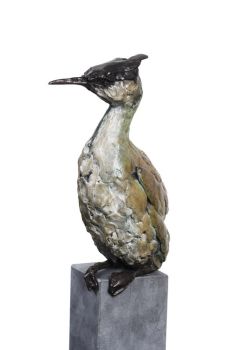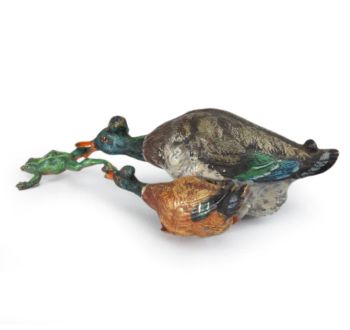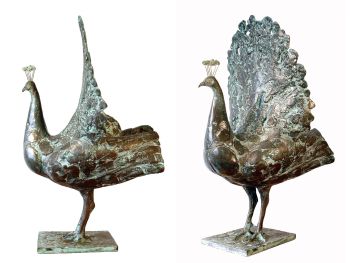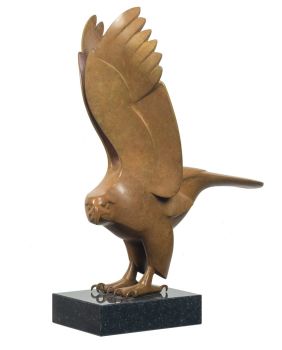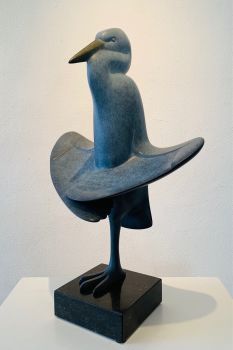A pair of Empire Candelabra 1810
Artista Desconocido
BronceMetal
75 cm
Actualmente no disponible a través de Gallerease
- Sobre la obra de arteA magnificent pair of Empire gilt and patinated bronze five-light candelabra each with the stem formed as an ancient winged priestess with her hands held aloft as she supports the vase on her head. This vase supports four branches that end in birds heads with each a candleholder on top. The priestess standing on a gilt bronze globe with a representation of Pegasus rearing on hind legs. The globe rests on a square truncated plinth mounted with Karyathides and diamond shaped ornamented cartouches with Imperial eagles in the centre. The truncated corners are ornamented with torches.
These sumptuous candelabra are identical in design to a known pair in the former Palais de Tuilleries. The overall design of the candelabra embodies the spirit of the Empire. The priestesses refer to the goût Égyptienne, as inspired by Napoleons Egyptian campaigns. The eagles pay reference to Napoleon’s reign and the representation of Pegasus symbolyses fame. The globe is symbol of the sovereignety over the world.
Although the maker is unknown and none of the above examples bear a maker's mark their design compares with other candelabra and bronzes made by two of the Empire's most celebrated bronziers namely Pierre-Philippe Thomire (1751-1843).
Marie-France Dupuy-Baylet, L'Heure, Le Feu, La Lumière, Les Bronzes du Mobilier National 1800-1870, 2010, pp. 166-167 - Sobre el artista
Puede suceder que un artista o creador sea desconocido.
Algunas obras no deben determinarse por quién está hecho o por (un grupo de) artesanos. Algunos ejemplos son estatuas de la Antigüedad, muebles, espejos o firmas que no son claras o legibles, pero también algunas obras no están firmadas en absoluto.
También puedes encontrar la siguiente descripción:
•"Atribuido a …." En su opinión, probablemente una obra del artista, al menos en parte.
•“Estudio de….” o “Taller de” En su opinión, una obra ejecutada en el estudio o taller del artista, posiblemente bajo su supervisión
•“Círculo de…” En su opinión, una obra del período del artista que muestra su influencia, estrechamente asociado con el artista pero no necesariamente su alumno.
•"Estilo de …." o “Seguidor de…”. En su opinión, una obra ejecutada al estilo del artista pero no necesariamente por un alumno; puede ser contemporáneo o casi contemporáneo
•"Manera de …." En su opinión una obra al estilo del artista pero de fecha posterior
•"Después …." En su opinión, una copia (de cualquier fecha) de una obra del artista
•“Firmado…”, “Fechado…” o “Inscrito” En su opinión, la obra ha sido firmada/fechada/inscrita por el artista. La adición de un signo de interrogación indica un elemento de duda.
•“Con firma…”, “Con fecha…”, “Con inscripción…” o “Lleva firma/fecha/inscripción” en su opinión la firma/fecha/inscripción ha sido añadida por alguien que no es el artista
Artwork details
Related artworks
- 1 - 4 / 12
Artista Desconocido
Set Franse Empire Pendules / Empire Lectura penduleearly 19th
Precio a consultarKuipers Kunst & Antiek
Artista Desconocido
Pulseira de diamante do século 18 com entalhes de 2.000 anos1790
€ 23.000Adin Fine Antique Jewellery
 curada por
curada porDanny Bree
Artista Desconocido
Set of eight gouache drawings1799 - 1801
Precio a consultarRobert Schreuder Antiquair
1 - 4 / 15Artista Desconocido
PAREJA DE ANTORCHAS O VELAS DE TECA DORADA Y LACADA INDONESIA18th century
Precio a consultarZebregs & Röell - Fine Art - Antiques
Artista Desconocido
A rare Japanese export lacquer medical instrument box1650 - 1700
Precio a consultarZebregs & Röell - Fine Art - Antiques
1 - 4 / 24- 1 - 4 / 24

